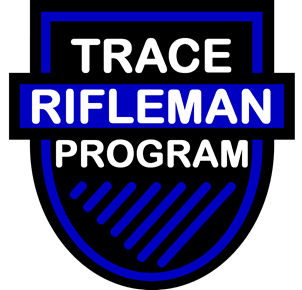Took this from another forum. Thought it was great test of knowledge
The below questions is a basic foundation for a Rifleman knowledge test. Each of these questions are covered and performed during the Trace Rifleman Program.
Give this shot, lets see how we all stack out on the answers and lets learn something today!
Please post below your answer sheet. I will give this till Nov the 8th and I will post the correct answers then in order.
John

1. With a 1/4 MOA adjusted optic, moving the bullet print 6.25 inches at 200yds will take this many clicks:
A) 3
B) 4
C) 6
D) NONE of the above
2. Basic .30cal windage formula is:
A) distance x wind velocity / 10 = MOA CLICKS
B) MOA / wind velocity / distance = MOA CLICKS
C) Wind velocity / 4 + distance = MOA CLICKS
D) NONE of the above
3. A MilRad is a unit of measure that is a value of 1/100
A) True
B) False
4. The target is 19inches wide, in the MilRad reticle the reading is 4.1 mil. How far way is the target:
A) 215yds
B) 128yds
C) 432yds
D) NONE OF THE ABOVE
5. The two types of marksmanship use of slings are:
A) Hasty and Support
B) 1 point and 2 point
C) Hasty and loop
D) NONE OF THE ABOVE
6. How many minutes of angle in a degree?
A) 60 MOA
B) 30 MOA
C) 120MOA
D) None of the above
7. How many MilRad to a degree?
A) 28.115
B) 3.60
C) 27.778
D) None of the Above
8. Cone of fire: The combined effects of the weapon and ammunition's ability to cluster shots at distance. Measured in IPHY, MOA, MIL, inches or Metric. (Precision of the total system)
A) TRUE
B) False
9. IPHY and MOA are the same unit of measure:
A) TRUE
B) FALSE
10. Are the following steps below correct for figuring out the bullet placement with cant in the rifle?A) YES
- Determine the elevation required to engage the target at a given range in MOA or MIL
- Add 3 MOA or 1 MIL to the elevation correction you would use to engage the target
- Multiply the sum by the sin of the cant angle. The result is the horizontal displacement of the shot
- Multiply the sum by the cosine of the cant angle to approximate your effective elevation
B) NO
11. The basic rule of angled fire is too:
A) Hold magazine high side
B) Hold center mass past 100yds
C) Hold high edge of the target and centermass
D) NONE OF THE ABOVE
12. Gravity is a constant force on the bullets trajectory?
A) TRUE
B) FALSE
13. MOA to MilRad conversion is:
A) MOA x 3.438 = MIL
B) MIL x 3.438 = MOA
C) MOA / 3.438 = MIL
D) NONE OF THE ABOVE
14. When shooting a centerfire cartridge 100yd ZERO is aligning the line of sight to the summit of the trajectory?
A) TRUE
B) FALSE
15. A bullets ballistic coefficient is a constant value over the flight time to the target?
A) TRUE
B) FALSE
16. The three types of ballistics are:
A) Terminal, external, internal
B) External, terminal, introverted
C) Windage, bullet drop, grouping
D) NONE OF THE ABOVE
17. The hollow point in a boattail bullet (I.E. SMK) is part of the designed because:
A) It helps with the terminal performance on a live target
B) It helps the bullet’s trajectory
C) It’s a result of the manufacturing process
D) None of the above
18. What clock value has the most effect on the bullets flight path?
A) 3 o’clock and 9 o’clock
B) 12 o’clock and 6 o’clock
C) 10 o’clock and 5 o’clock
D) NONE OF THE ABOVE
19. The size of 3 MOA at 1000yds is:
A) 30.25 inches
B) 32.74 inches
C) 31.41 inches
D) None of the above
20. The size of 5 MilRad at 200yds is:
A) 18”
B) 36”
C) 9.456”
D) NONE OF THE ABOVE
21. With a .1Mil adjusted optic , moving the bullet print 9 inches at 500yds will take this many clicks:
A) .9
B) .2
C) .5
D) NONE OF THE ABOVE
This type of infomation skillset is what sets Trace Armory Group apart from the rest!

